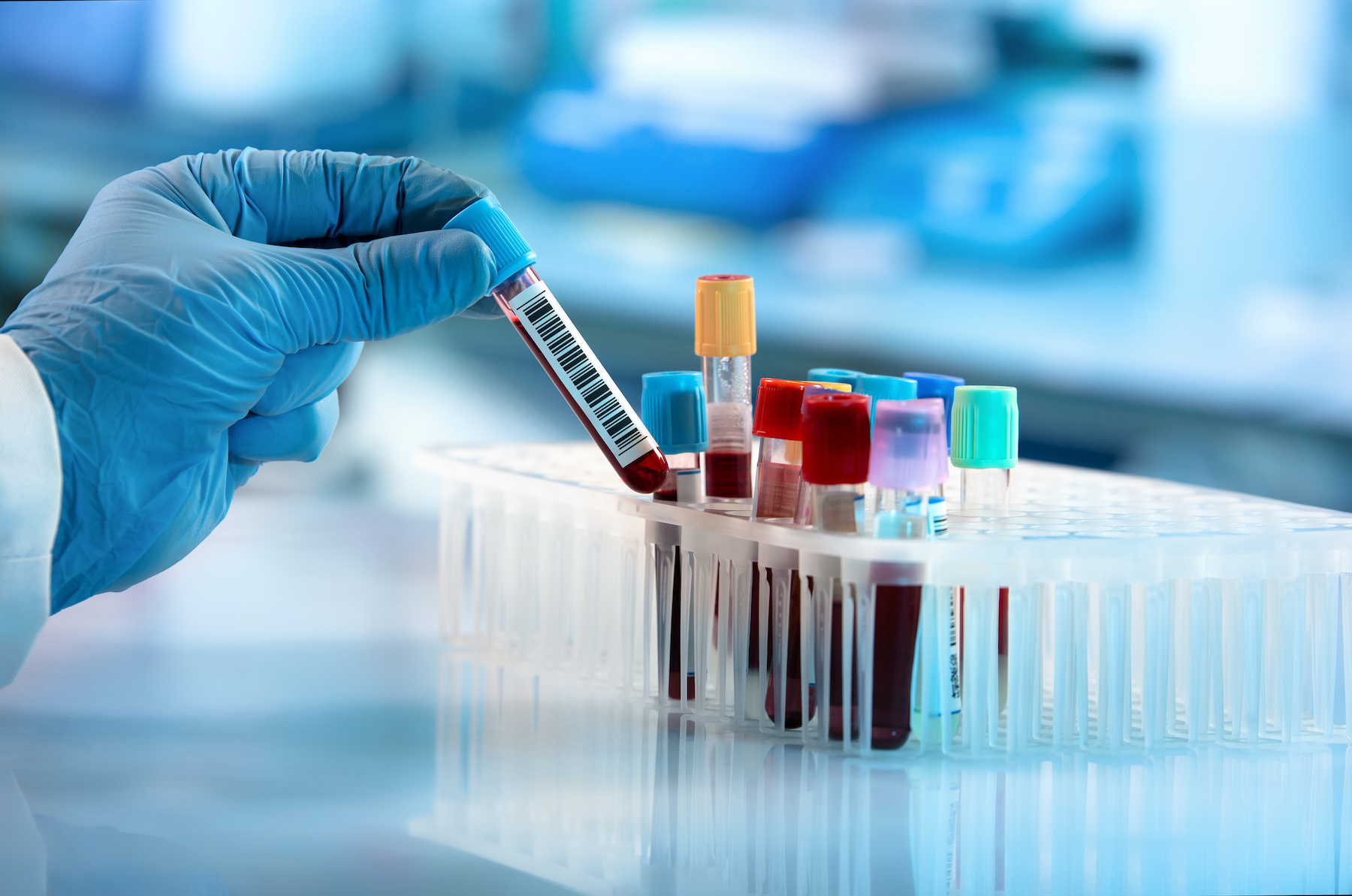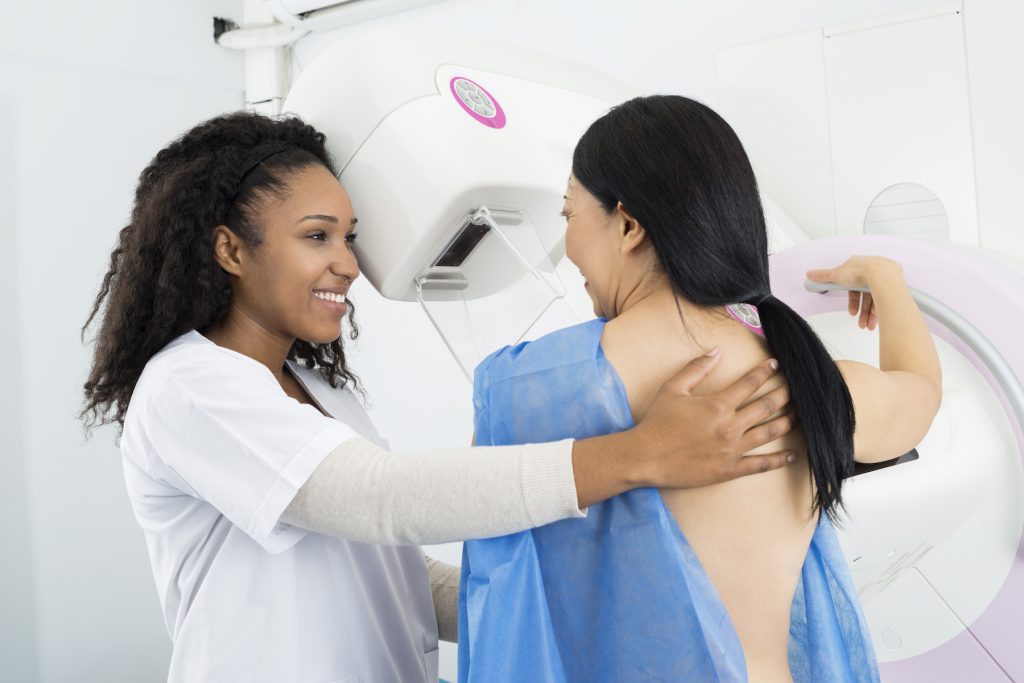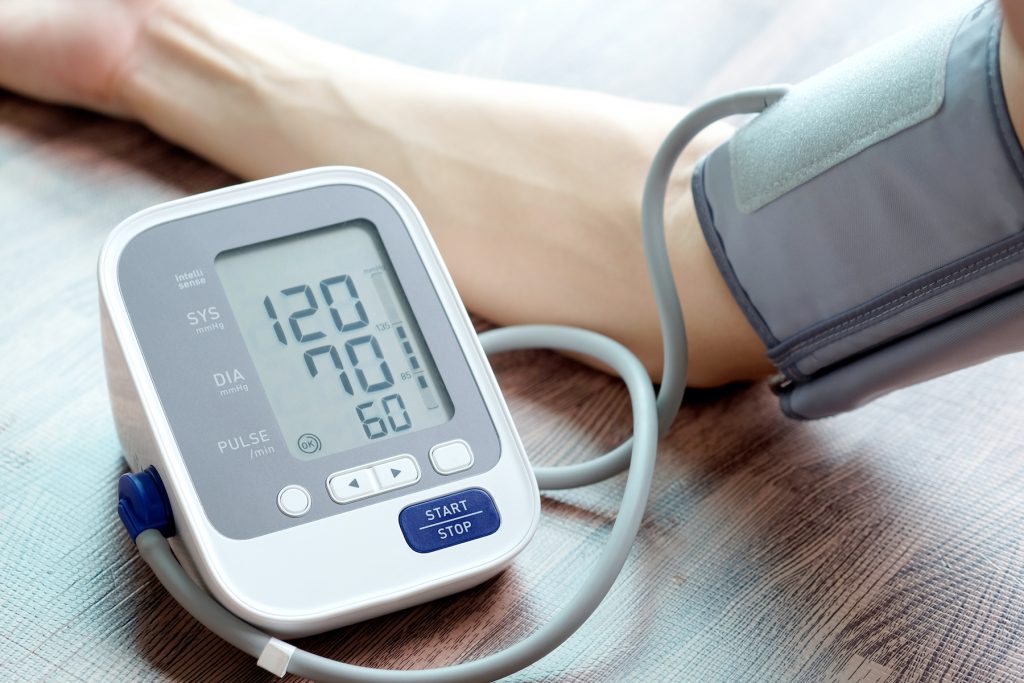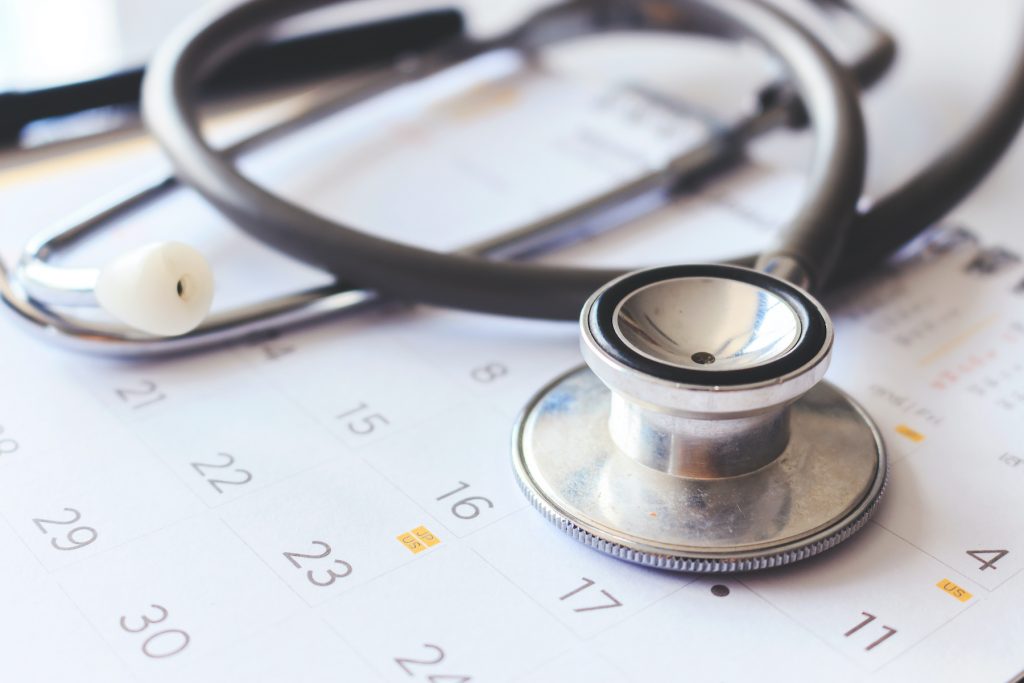The most requested topic for our series of Routine & Well Visits in Spanish is how to talk about different lab tests and lab results in Spanish.
In this lesson you will learn how to describe and discuss the results of the following tests:
- Blood sugar tests in Spanish
- CBC blood test in Spanish
- Cholesterol test in Spanish
- Thyroid function test in Spanish

Subscribe to our YouTube Channel to see all of our lessons and get the latest videos right away!
Vocabulario general – General Vocabulary
| Spanish | English |
| Aguja pequeña | A small needle |
| Análisis de sangre | Blood analysis |
| Antecedentes familiares | Family history |
| Concentración (alta/baja) de… | (High/Low) concentration of… |
| Edad | Age |
| Entre | Between, among |
| Factores de riesgo | Risk factors |
| Gota de sangre | A drop of blood |
| Por ciento | Per cent |
| Promedio | Average |
| Prueba de sangre | Blood test |
| Más de / Menos de… | More than / Less than… |
| Mayor de / Menor de | Greater than / Less than |
| Nivel (alto/bajo) de… en la sangre | (High/Low) level of… in blood |
| Resultados | Results |
Algunos verbos – Some Verbs
| Spanish | English |
| Ayunar = no comer ni beber | To fast |
| Confirmar el diagnóstico | To confirm the diagnosis |
| Detectar enfermedades | To detect illnesses |
| Encontrar / saber la causa | To find / To know the cause |
| Hacer una prueba de sangre | To do a blood test |
| Medir | To measure |
| Sacar sangre para análisis | To draw blood for analysis |
| Verificar la función de… | To verify the function of… |
Glucosa / azúcar en la sangre – Sugar in blood
| Spanish | English |
| A1C | A1C |
| Nivel | Level |
| Promedio | Average |
| En ayunas | Fasting |
| Tolerancia | Tolerance |
| Normal | Normal |
| Prediabetes | Prediabetes |
| Diabetes | Diabetes |
| Anticuerpos (autoanticuerpos) | Antibodies (autoantibodies) |
| Cetonas en la orina | Urine ketones |
| Glucosa | Glucose |
| Cambio de estilo de vida | Lifestyle change |
| Resultados | Results |
1. Prueba A1C – A1C Test:
La prueba A1C mide el nivel promedio de azúcar en la sangre de los 2-3 meses anteriores siguiendo estos parámetros:
A1C test measures the average blood sugar level for the past 2-3 months according to these parameters:
- Menos de 5.7 por ciento es normal / Less than 5.7 percent is normal.
- Entre 5.7 y 6.4 por ciento es pre-diabetes / Between 5.7 and 6.4 percent is pre-diabetes.
- Más de 6.4 por ciento es diabetes / More than 6.4 percent is diabetes.
Related lesson: Explaining A1C in Spanish
2. Azúcar en la sangre en ayunas – Fasting Blood Sugar :
Mide el nivel de azúcar en la sangre después de ayunar (no comer) durante la noche:
It measures the blood sugar level after fasting (not eating) overnight:
- 99 miligramos/decilitro o menos es normal / 99 milligrams/deciliter or less is normal.
- 100-125 mg/dl indica pre-diabetes / 100-125 mg/dl indicates pre-diabetes.
- 126 mg/dl o más indica diabetes / 126 mg/dl or more indicates diabetes.
3. Prueba de tolerancia de glucosa – Glucose Tolerance Test:
Mide sus niveles de azúcar antes y después de tomar un líquido azucarado (que tiene glucosa). Después de ayunar, sacamos una muestra de sangre. Luego bebe el líquido. Y luego sacamos más muestras de sangre a 1 hora, 2 horas, y 3 horas después.
It measures your blood sugar levels before and after drinking a sugary liquid (which has glucose). After fasting, we take a blood test. Then you drink the liquid. And then we take more blood samples at 1 hour, 2 hours, and 3 hours after.
- 140mg/dl es normal / 140mg/dl is normal.
- 140-199mg/dl indica pre diabetes / 140-199mg/dl indicates pre-diabetes.
- Un resultado más de 200mg/dl indica diabetes / A result over 200mg/dl indicates diabetes.
4. Prueba de azúcar no programada – Unscheduled blood sugar test:
Mide sus niveles de glucosa en la sangre sin ayunar.
It measures your blood glucose levels without fasting.
- Un resultado más de 200mg/dl indica diabetes / A result over 200mg/dl indicates diabetes.
Niveles de Colesterol – Cholesterol Level
| Spanish | English |
| Sustancia cerosa | Waxy substance |
| La grasa | The fat |
| Las células | Cells |
| El hígado | Liver |
| Producir | To produce |
| Los alimentos (las comidas) | Food (meals) |
| Altas en / bajas en… | High in / Low in |
| La carne | Meat |
| Los huevos | Eggs |
| Los productos lácteos | Dairy products |
| Lípidos | Lipids |
| Alta densidad | High Density |
| Baja densidad | Low density |
| Enfermedad de corazón | A heart Disease |
| Placa en las arterias | Plaque in the arteries |
| Obstruir | To obstruct |
| El flujo de sangre | Blood flow |
| El corazón | Heart |
| El cerebro | Brain |
| Perfil / Panel de lípidos | Lipid profile / panel |
El colesterol es una sustancia cerosa (waxy), parecida a grasa. Las células y los órganos del cuerpo necesitan colesterol para ser saludables. El hígado produce el colesterol que necesitamos. Ciertas comidas como carnes, huevos y productos lácteos también contienen colesterol.
Cholesterol is a waxy, fat-like substance. The body’s cells and organs need cholesterol to be healthy. The liver makes the cholesterol we need. Certain foods such as meats, eggs, and dairy products also contain cholesterol.
La prueba y tipos de colesterol – Cholesterol Test and Types:
LDL: lipoproteínas de baja densidad – colesterol “malo” / low density lipoproteins – “bad” cholesterol.
- Riesgo de tener enfermedad del corazón / Risk of heart disease.
- Forma placa en las arterias > obstruye la circulación de sangre a órganos importantes / It forms plaque in the arteries > it obstructs blood circulation to important organs.
- Al corazón puede resultar en un ataque al corazón / To the heart can result in a heart attack.
- Al cerebro puede resultar en un ataque/derrame cerebral / To the brain can result in a stroke.
HDL: lipoproteínas de alta densidad – colesterol “bueno” / high density lipoproteins – “good” cholesterol.
- Ayuda a eliminar el colesterol malo (LDL) / It helps to eliminate bad cholesterol (LDL).
Triglicéridos: otro tipo de grasa en la sangre. Niveles altos aumentan el riesgo de enfermedad del corazón / another type of fat in the blood. High levels increase the risk of heart disease.
¡Gracias POR compartir su aventura de español conmigo!
Su tarea – Your Homework
- Review the notes & vocabulary
- Identify additional points and topics to discuss with patients
- Let me know if you need help 🙂
- Remember to keep it simple if you need to
- Ask for help in the comments below
- Give it a try with your patients!
Now it’s your turn! I packaged all of this vocabulary in Spanish into some flashcards for you to study.
Keep up the good work speaking responsible Spanish to your patients! Check out our other books, classes & products to help you learn medical Spanish!
*If the link isn’t working for you, you may need to unblock pop-ups in your browser settings
Other posts in this Well Visit series:
How to talk about weight management in Spanish
In today’s lesson you’ll learn how to talk about weight management in Spanish. This is…
Well Woman Visits in Spanish
This is lesson 4/5 in our Spanish Well Visits series. Well Woman visits and gynecologic…
How to Discuss Cancer Screenings in Spanish
In today’s video viernes lesson, you will learn how to talk about cancer screenings in…
Blood Pressure Management in Spanish
Lesson 2 in our routine well visit series is all about blood pressure management in…
Medical Spanish Well Visit Series
Thank you for taking the Medical Spanish Well Visit survey over the last couple of…










Great reference page here! It would be helpful if more was included between both languages. For instance, I have a blood lab result from the USA that lists MCV, MCH, MCHC, RDW, and MPV. However, I am trying to fill out a spanish form in another country that asks for TGO, TGP, FT4, TSH, and LH. It would be helpful to know what these each mean so that I can properly fill out the needed information, as I cannot find many references for such.